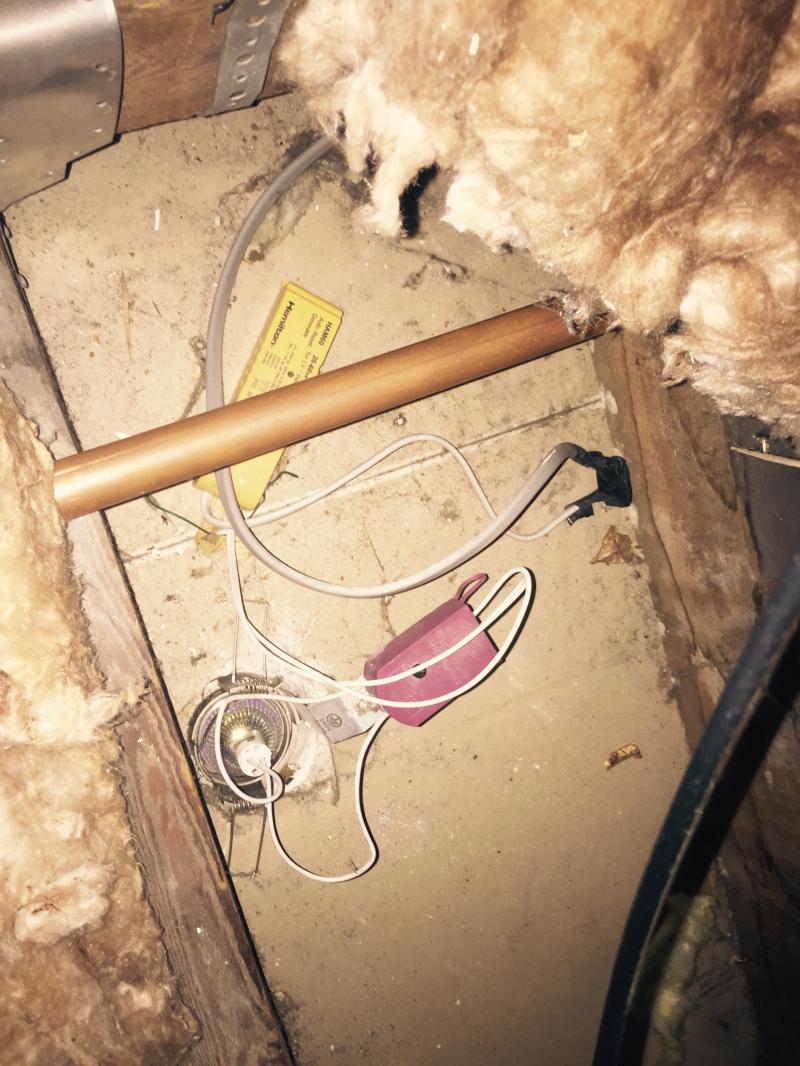I've put some insulation between my rafters in the loft and I reached the Downlights and their wires, etc and I read I shouldn't put insulation on them although the insulation material is not flammable and also the energy saving bulbs don't generate much heat (9w bulbs)?
Please see the image attached. Please ignore the copper pipe (it's a cold pipe for the boiler in the loft)
So I should use a cap/hood/box something to separate the insulation from the downlights and those wires I've understood.
Should I put only the downlight within this box or also the other wires and the transmitter also?
I researched from google: https://www.downlightsdirect.co.uk/fire-hoods-loft-caps.html#isPage=1
and I have 2 main options I've understood:
1)
Downlight Insulation Guard for £8.99 from ScrewFix: http://www.screwfix.com/p/halolite-downlight-insulation-guard-220mm/97932
This only separates the downlight from the insulation but doesn't provide any thermal/moisture protection so the hot air will scape from this.
2)
Loft Cap for £10.80 each: http://www.allaboutelectrics.co.uk/aico-thermal-loft-cap.html
This also separates them but in addition it works like a Vapour and thermal insulation seal. I'm not sure it's necessarily a good thing since this has the downside that inside this cap gets hot and I suspect it can overheat/damage the wires/transmitter within.
3)
Third option is possibly this: https://www.youtube.com/watch?v=RjV_D9sgxNw
Just using a Heat Defuser and putting the insulation material on top of it.
So, which one?
Thanks,
Please see the image attached. Please ignore the copper pipe (it's a cold pipe for the boiler in the loft)
So I should use a cap/hood/box something to separate the insulation from the downlights and those wires I've understood.
Should I put only the downlight within this box or also the other wires and the transmitter also?
I researched from google: https://www.downlightsdirect.co.uk/fire-hoods-loft-caps.html#isPage=1
and I have 2 main options I've understood:
1)
Downlight Insulation Guard for £8.99 from ScrewFix: http://www.screwfix.com/p/halolite-downlight-insulation-guard-220mm/97932
This only separates the downlight from the insulation but doesn't provide any thermal/moisture protection so the hot air will scape from this.
2)
Loft Cap for £10.80 each: http://www.allaboutelectrics.co.uk/aico-thermal-loft-cap.html
This also separates them but in addition it works like a Vapour and thermal insulation seal. I'm not sure it's necessarily a good thing since this has the downside that inside this cap gets hot and I suspect it can overheat/damage the wires/transmitter within.
3)
Third option is possibly this: https://www.youtube.com/watch?v=RjV_D9sgxNw
Just using a Heat Defuser and putting the insulation material on top of it.
So, which one?
Thanks,



